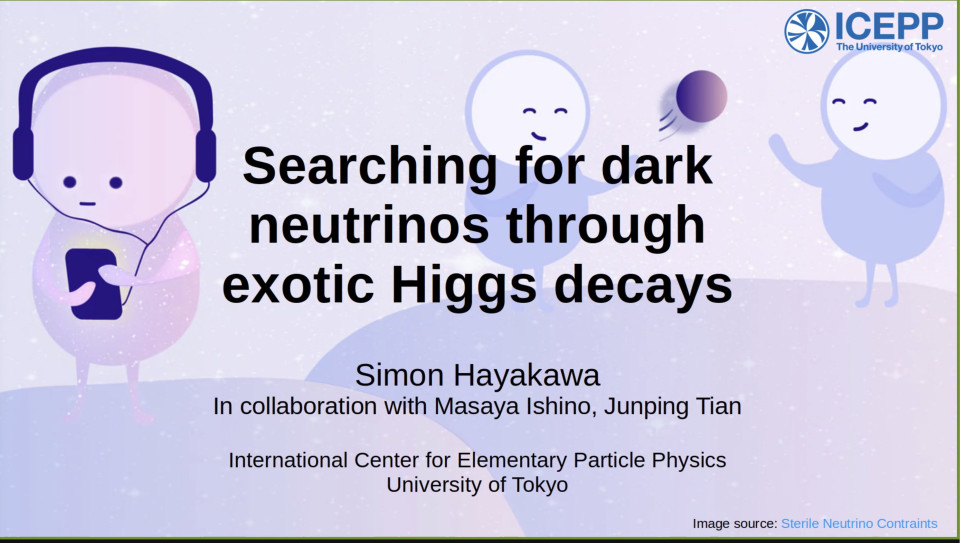DMWG Seminar by Simon Thor on October 24, 2023
The Standard Model of particle physics nicely describes our worlds, while we are not satisfied with this theory as there are phenomena we cannot explain exist. Dark matter (DM) is a famous example. The construction of the Standard Model is achieved by tremendous discoveries at collider experiments. It is a natural prediction that the extension of the Standard Model will be achieved with further discoveries at collider experiments. Hoping for such a scenario, several future collider experiments, such as the international linear collider (ILC), are now being planned.
ILC is good at probing new physics scenarios which is related to the Higgs sector of the Standard Model. The dark neutrino model is one example that contains new dark sector particles. If the mass of the dark neutrino falls between that of the weak bosons and the Higgs, the prediction can be relatively clear: characterization of the signal can be done with three parameters in the model.
Still, there are difficulties to overcome. As is usual the case, we have to find signals from data with significant background events. For example, one first makes preselection, then performs the rectangular cut (a kind of optimization), and finally tests the significance of the signal. By introducing machine learning techniques to several analysis parts the sensitivity to the model can be increased.
Test using simulation data for ILC experiments at the center-of-mass energy 250GeV, it is shown that the constraints on the dark neutrino model can be improved by one- or two orders of magnitude. Further improvement can be achieved by introducing new ideas for the analysis, which will be investigated. By increasing the number of channels to be analyzed, the mass range of the dark neutrino to be probed can also be widened.
A lot of physics has already been done with colliders, and further more is to be with new colliders and new techniques. We are boosting now!
Reported by Nagisa Hiroshima

